The location of Rio de Janeiro between the mountains and the sea is so breathtaking that it was recognized by UNESCO as "the staggeringly beautiful location for one of the world's biggest cities" when the organization designated Rio as a World Heritage Site. The urban cultural landscape as well as the combination of architecture and planned open space that defined the expansion of the city were praised by UNESCO as contributing factors to the city's designation as a World Heritage Site.
The city of Rio de Janeiro is the second most populous in Brazil, and it served as the country's capital from the year 1763 until 1960, when Braslia was established. In the middle of the sixteenth century, Portuguese colonists established the city, which later developed into a port for the export of gold extracted from mines located further inland.
Rio seems to have been aware of its physical assets throughout its history, such as the towering mountains that are located behind it, Sugarloaf, which is located above its harbor, and its long crescent beaches that are its primary tourist attractions. As a result, Rio has enhanced its landscape with notable buildings from each era of its history as well as with a generous supply of urban parks and open spaces. Explore the best that Rio de Janeiro has to offer by perusing our selection of the city's most popular tourist destinations.
1. Christ the Redeemer, also known as Cristo Redentor
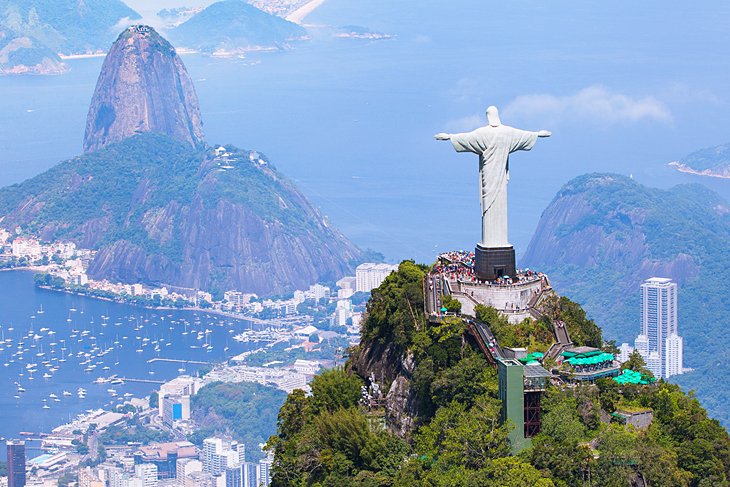
The unusual form of Sugarloaf Mountain is almost as well-known a symbol of Rio de Janeiro as the enormous statue of Christ that overlooks the city from the top of Corcovado, which is located 709 meters above sea level. Between the years of 1922 and 1931, the construction of the internationally renowned landmark was funded nearly completely by donations made by Brazilian Catholics.
The Polish-French artist Paul Landowski was responsible for the creation of the Art Deco statue, and the statue was built by the Brazilian engineer Heitor da Silva Costa, along with the assistance of the French engineer Albert Caquot. The figure's body is made of reinforced concrete and soapstone; its height is 30 meters, and its arms spread out to a length of 28 meters; its total mass is 635 metric tons. There is a chapel located inside the eight-meter-high base of the structure, and it is not unusual for weddings and baptisms to take place there.
The Rua do Cosme Velho station is the starting point for the Corcovado rack railway, which travels through Tijuca National Park on its route to the statue at the top of the mountain. During the guided Early Access to Christ Redeemer Statue with Optional Sugarloaf Mountain Tour, you will get the opportunity to view this landmark before the typical throng arrive and in the early morning light. An upgrade to the tour includes a journey on a cable car up Sugarloaf Mountain, which offers even more breathtaking vistas.
2. Sugarloaf
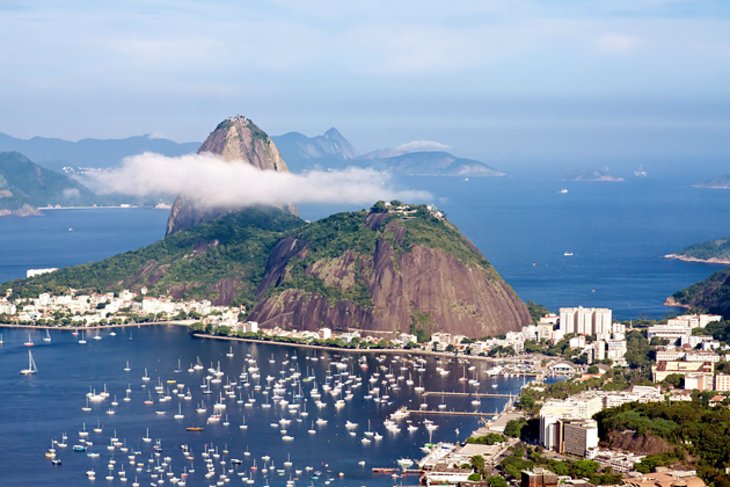
The rock summit of Sugarloaf, which is located in Rio de Janeiro and stands 394 meters above the harbor, is the city's most famous feature. It is located on a point of land that juts out into the bay and encircles its port, and it is joined to the city by a narrow strip of ground that is rather flat.
You can take a cable car from Praca General Tibrcio to the top of the Morro da Urca, which is a lesser peak and serves as the starting point for a second cableway that extends to the top of the Sugarloaf. The entire steep coast that surrounds the bay and its islands may be seen from this vantage point in its entirety.
Between the Morro Cara de C and the Sugarloaf, the Praia da Urca beach, which is only 100 meters long, may be found in close proximity to the site of Rio's original nucleus. On Cara de Có are three forts, one of which, the star-shaped Fort So Joo, which dates back to the 16th century, is open to the public.
3. Copacabana
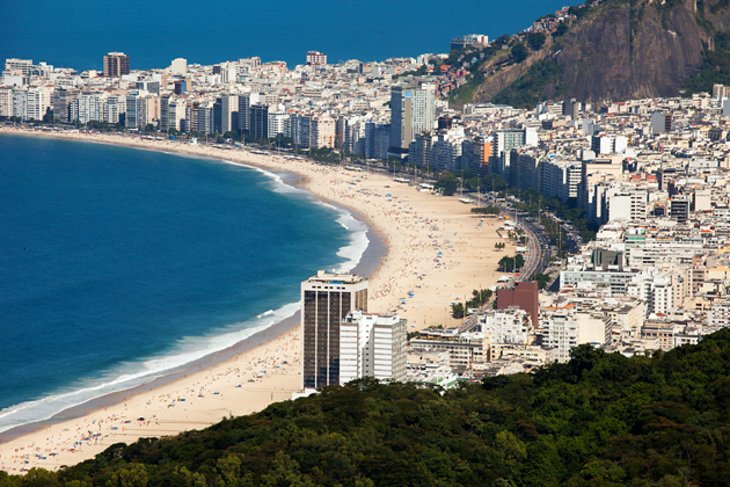
It is a rare blessing for a city to have a gorgeous stretch of sand beach right in the middle of its downtown area, much less one that runs for four kilometers down one side of the entire central business district. Avenida Atlantica, Avenida Nossa Senhora de Copacabana, and the surrounding smaller streets are just a few steps away from its golden sands. On these streets and the surrounding smaller streets, you'll find charming structures that date back a century, magnificent hotels, and popular restaurants and cafés.
The world-famous Copacabana Palace, which was constructed in the 1920s and is now a national monument, is undoubtedly the most prestigious hotel in this region and among Rio's lodging options. The Copacabana Palace harkens back to the golden days of power, money, and elegance, when Rio was the capital of Brazil. The palace was featured in the film Flying Down to Rio, which was released in 1933, and it played home to royalty as well as dazzling movie stars.
The Copacabana Fort is located at the very end of the beach and dates back to 1914. In 1922, a mutiny of officers took place there, and they took control of the fort and turned its guns on the city. The next day, the government dispatched battleships to bombard the fort, which resulted in the short-lived rebellion coming to an end. The Museu Histórico do Exército, also known as the Museum of the History of the Army, is located in this very building and it is where you will find information regarding this and other aspects of military history. Artillery pieces from the late 19th century and the early 20th century can be found outside, on the grounds of the fort.
4. Ipanema
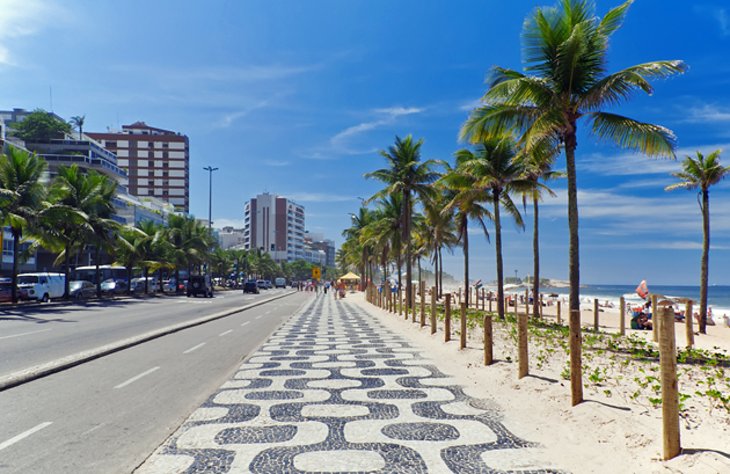
Ipanema and Leblon beaches are located to the west of Copacabana's four-kilometer shoreline and are separated from one another by the Jardim de Alá Canal, which empties into Lagoa Rodrigo de Freitas. Large hotels, sidewalk cafés, and restaurants can be found all along the promenade that runs along the water's edge.
In spite of the fact that these two neighborhoods are best known for their beaches (one of which was made famous throughout the globe by the song "The Girl from Ipanema"), they also boast a thriving cultural life, with art galleries, cinemas, and an avant-garde theater. Every Sunday, the Praca de Quental in Leblon plays host to an antiques market, and the Praca General Osorio plays host to the Sunday Feira de Artesanato de Ipanema, which features handicrafts, music, art, and food from the local area.
5. Carnaval (Carnival)
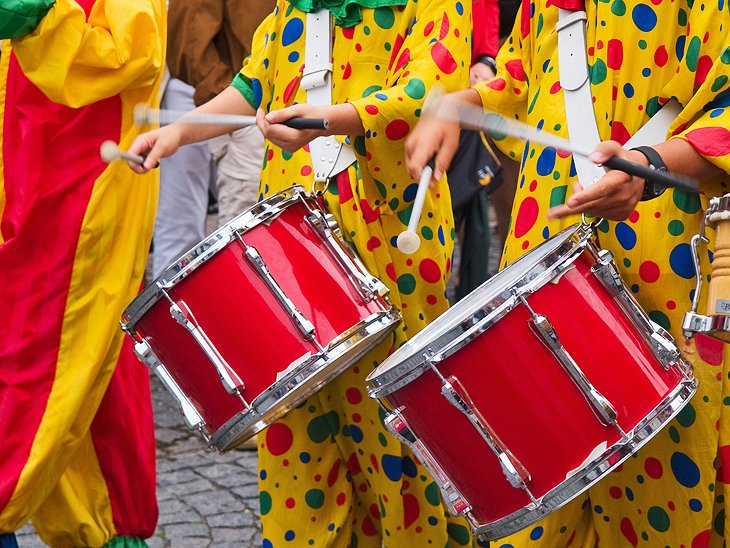
Rio de Janeiro hosts each year one of the most well-known pre-Lenten festivals, which is on par with the celebrations held in Venice and New Orleans. This event takes place throughout the winter months. The festivities begin not long after the New Year, but the splendor and extravagance reach its dramatic conclusion in the four days before Ash Wednesday. This is when hundreds of thousands of spectators attend the street parades, samba parties, and shows that are held during this time. Carnaval is also celebrated in the Brazilian cities of Bahia and Recife, where it is also a significant tourist event, but Rio's is by far the most extravagant.
The most outstanding activities are the parades of the several samba schools, which take place in a one-of-a-kind setting that was designed by Oscar Niemeyer, who is a well-known Brazilian architect. The Sambódromo is a long parade path lined by stadium-style boxes created so that up to 90,000 spectators may watch the parades of magnificently costumed dancers as they participate. This allows for a lot of people to witness the parades. The parade path has a length of 700 meters and a width of 13 meters. It was put to use for the first time in 1984, and it was upgraded to serve as a venue for the Olympic Games in 2016.
related link: Stunning Black-sand Beaches, National Parks, and Dormant Volcanoes Can Be Found in This Spanish Archipelago
6. The National Park of Tijuca

The Cristo Redentor statue on Corcovado is located within the Tijuca National Park, which also safeguards the surrounding Tijuca Forest and provides a number of vantage points that look out over the city. You can get off the train that goes up to Corcovado at the halfway point, and then take the route that goes through the forest to explore the park.
In the late 1850s, the 3,300-hectare Tijuca Forest, which is one of the world's largest woods within a city, was planted on ground that had been damaged by coffee plantations in order to protect the springs that provided Rio de Janeiro with water. Today, the Tijuca Forest is considered to be one of the most biodiverse urban forests in the world. The majority of the trees are native species, and they create a habitat for many different kinds of wildlife, including capuchin monkeys, quatis (Brazilian raccoons), colorful toucans, hawks, vivid blue butterflies, and many more kinds of animals, which you might see if you explore the park's trails and roads.
Largo do Boticário is one of Rio's most scenic squares, and it is located close to the station of the Corcovado railway. It is surrounded by residences that have a colonial-style architecture. Views over the Municipal Park, the Botanic Garden, and a considerable portion of the south coast may be had from the pagoda-style pavilion that is located on Morro da Vista Chinesa, which is located 380 meters above the water.
The viewpoint of Mirante Dona Marta, which is perched on a jutting outcrop of rock above Botafogo Bay, provides visitors with additional vantage points. The woodland springs are the source of several waterfalls, the tallest of which is the Cascatinha Taunay, which drops thirty meters.
Azulejos are typical Portuguese tiles that date from the 17th through the 19th centuries and can be found in the Museu do Acude, which is located in wide gardens close to the park. It has the priceless porcelain collections of the West India Company as well as ancient views of Rio de Janeiro created by Brazilian and international painters.
7. Jardim Botanico (Botanical Garden)

The Jardim Botanico in Rio de Janeiro is a botanical garden that spans over 350 acres and is located at the foot of Corcovado. It is a combination of an ecological refuge, show gardens, and a research laboratory that is placed in a magnificent park-like setting. The Orchidarium, a greenhouse made of iron and glass that was constructed in the 1930s and is home to more than 2,000 varieties of orchids, and the Japanese Gardens, which feature cherry trees, wooden bridges, koi ponds, and bonsai, are two of the most popular attractions here.
A Braille sign guides visitors through a garden filled with fragrant plants and herbs. The garden, which is a UNESCO biosphere reserve, is home to over 8,000 different varieties of plant life in addition to the birds and animals that make this area of the world their home. Some of these species include toucans and marmoset monkeys. You have the option of either strolling through the gardens under the towering royal palms and pau-brasil trees or taking an electric cart trip across the grounds.
8. Prainha Beach (Little Beach)
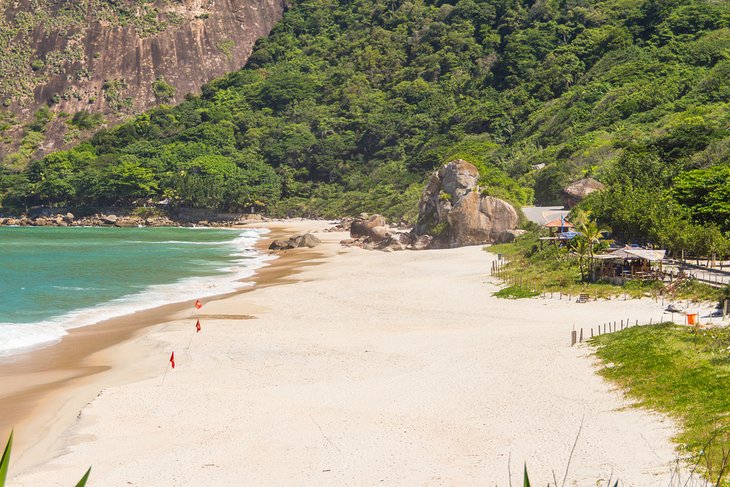
If you have been to the beaches of Copacabana and Ipanema and still want more, but at the same time are seeking for something a little bit different, the trip down to Prainha, which is twenty kilometers long, is the perfect option for you. This beach, which is located where the jungle meets the ocean, is more natural than the beaches located in the heart of Rio.
Golden sands and enormous round rocks are lapped by the water at this beach, and it is not difficult to find your own private section of sand to lie on and soak up the sun. If you enjoy surfing, you've come to the right spot to do it. In May, consistent rides are provided by nice right and left breakers; thereafter, the waves become flatter until September.
9. Maracanã
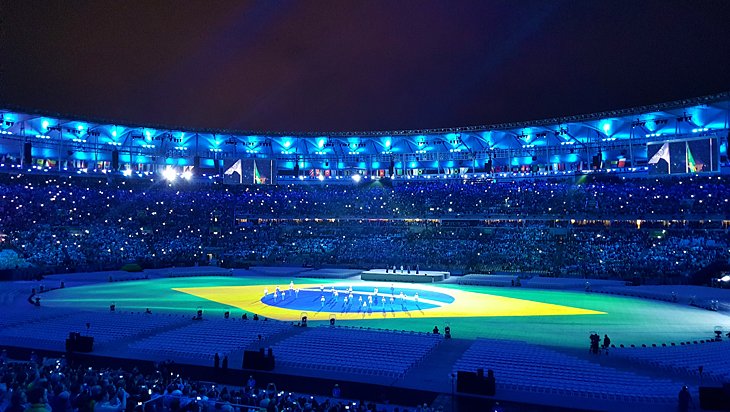
Fans of football (soccer) should make it a point to attend any games that are played at Brazil's largest stadium, which also served as the venue for the opening and closing ceremonies of the Summer Olympics in 2016. It had a comprehensive makeover for the FIFA World Cup in 2014 and now has a capacity of over 78,000 spectators.
In addition to hosting concerts, the stadium hosts football matches featuring Rio's most prominent teams, including Flamengo, Botafogo, Fluminense, and Vasco da Gama, as well as other events. The quick trip might be of interest to die-hard enthusiasts, but everyone else would be better off skipping it.
The shore of Lagoa Rodrigo de Freitas, which is close to Copacabana and Ipanema and is the location of a number of other Olympic events, is bordered by parks and sports clubs, and the waters of the lagoon are frequently used for regattas and other types of water sports.
10. Santa Tereza and Escadaria Selarón
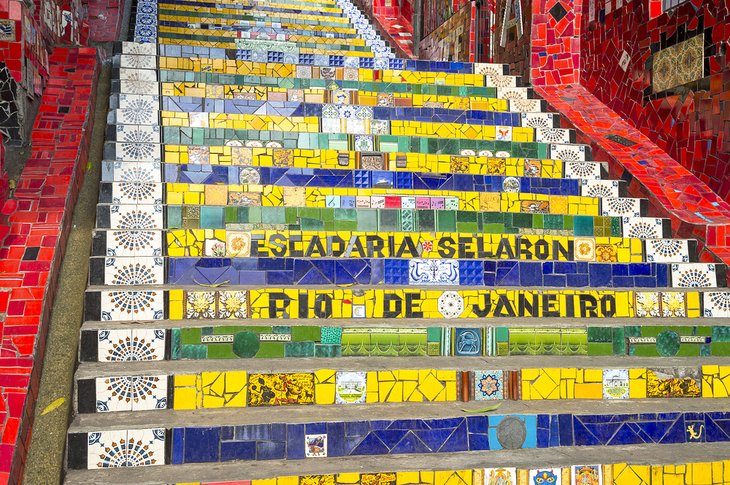
Santa Tereza is Rio's most atmospheric neighborhood since it is characterized by steep, silent streets and residences that are at least one hundred years old. The bohemian mood is enhanced by the fact that artists and intellectuals frequently frequent the area's cafés and restaurants. There are a number of attractions and things to do in the area, including the church and convent of Santa Tereza, which dates back to 1720. Although its greatest charms can be found simply by exploring its streets, which sometimes open out into breathtaking views, the area also features a number of other attractions and things to do.
The art collection at the Museu Chácara do Céu consists primarily of modern pieces, such as those created by Picasso, Miró, and Matisse. Additionally, the museum houses Chinese sculptures that date from the 17th to the 19th century. The neighboring Parque das Runas is the abandoned shell of a socialite's estate that was let to fall into disrepair and is now used as a venue for art, music, and performance.
Brazil is home to some of the most beautiful and diverse architecture in the world, from Baroque to Brutalism. Here's just a few of the best:
— The Cultural Tutor (@culturaltutor) May 13, 2023
Library of the Royal Portuguese Cabinet of Reading, Rio de Janeiro (1887) pic.twitter.com/SAoQLmbyka
The Escadaria Selarón is one of the newest tourist sites in Rio, and it can be found on the outskirts of the Santa Tereza district, close to where it meets the Lapa neighborhood. Jorge Selarón, an artist who was born in Chile and passed away in 2013, covered a lengthy flight of steps in front of his house with mosaics made of tiles, ceramics, and mirrors. Many of the mosaics were in the colors blue, green, and yellow, which are the colors of the Brazilian flag.
In the beginning, Selarón used broken tiles that he rescued from construction sites and the demolition of old buildings. However, when his steps began to attract the attention of tourists, individuals from all over the world began bringing him pottery and tiles from their respective countries. Currently, there are pieces from over sixty different countries distributed across the 250 steps that span 125 meters of stairs. The stairs have been used in a number of movies.
11. São Bento

The church and monastery of Sao Bento, widely considered to be among Brazil's most beautiful Benedictine buildings, are perched on a hill just above the port. The first version of the church, which was built in 1617, did not have aisles until the second part of the 17th century, when it was expanded by the installation of eight side chapels. The interiors of the building were decorated by some of the most talented artisans in the Benedictine order.
A monk by the name of Domingos do Conceicao was primarily responsible for the extravagant carving that covers the walls and ceiling. This same monk was also responsible for the sculptures of Saint Benedict and Saint Scholastica that are located on the high altar.
The choir chapel features silverwork by Mestre Valentim and 14 paintings by Ricardo do Pilar, a monk who was the preeminent Benedictine painter of colonial Brazil. Mestre Valentim was known for his work in silver. Senhor dos Martrios, also known as Christ of the Passion, is his most famous work and can be found in the sacristy of the monastery.
12. São Francisco da Penitência
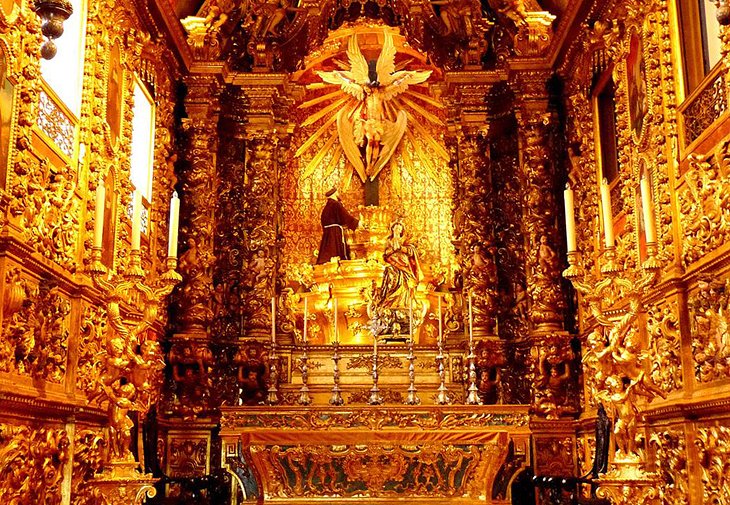
The Igreja da Ordem Terceira de So Francisco da Penitência is separated into three sections, each of which has its own entrance. Despite its unassuming exterior, the interior of this church is filled with opulence. The interior, work on which began in 1657 and was finally finished in 1773, is an explosion of gilded wood carvings.
Manuel and Francisco Xavier de Brito, two of the most prominent artists and woodcarvers in Portugal, were among the individuals who made contributions to the interior decorating of the building. They utilized decorative forms that were influential on Aleijadinho and other masters of Brazilian Baroque and had very similar styles, which are collectively referred to as Brito.
Caetano da Costa Coelho is responsible for the oldest trompe-l'oeil painting in Brazil, which was finished in 1736 and is located on the ceiling of the choir. Caetano da Costa Coelho also painted the ceiling of the nave in the same style later on.
13. The Municipal Theater, often known as the Teatro Municipal
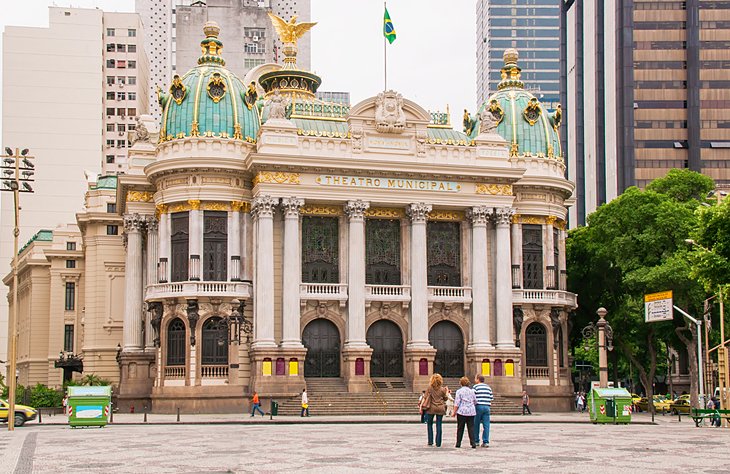
The interior of the enormous Municipal Theater, which was constructed at the beginning of the 20th century and was designed to resemble the Paris Opera of Charles Garnier, is even more elaborate and expensive than the spectacular towered facade of the building. In addition to the drop curtain, the proscenium frieze, and the ceilings, some of the most notable features to look out for are the sculptures created by Henrique Bernardelli, the paintings created by Rodolfo Amoedo and Eliseu Visconti, and the ceilings.
You can take a guided tour, some of which are offered in English; alternatively, you could watch a classical symphony or a ballet performance here.
14. Quinta da Boa Vista
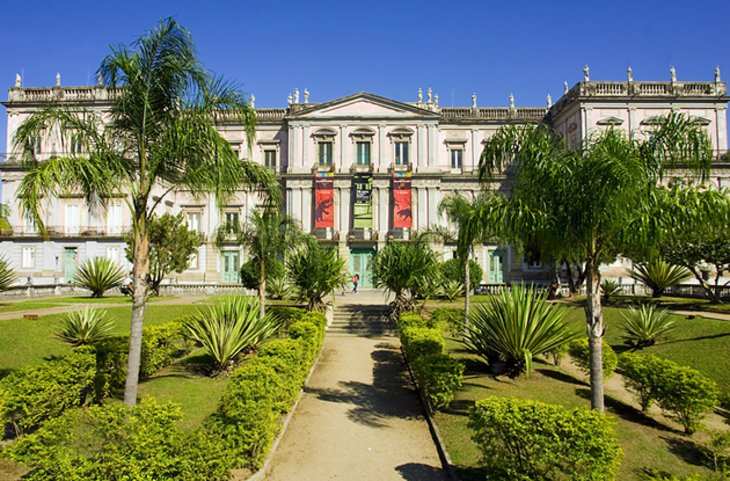
The gardens, villas, and imperial palaces of So Cristóvo are now public parks and museums, with Quinta da Boa Vista being the most prominent of these establishments. The palace served as the official house of the royal family and the imperial family from the years 1808 to 1889. It was afterwards remodeled and reconstructed as the Palácio de So Cristóvo. It is the location of the National Museum, which has more than one million artifacts among its zoological, botanical, ethnographic, and archaeological collections, making it the largest museum of its kind in the country.
The wide park contains gardens that include lakes, trees, and caverns, all of which may be reached by a small railway that runs across the park. There is a zoo located within the park that is home to over 2,000 different species of mammals, birds, and reptiles from Brazil as well as other parts of the world.
15. Nossa Senhora do Carmo and Monte do Carmo
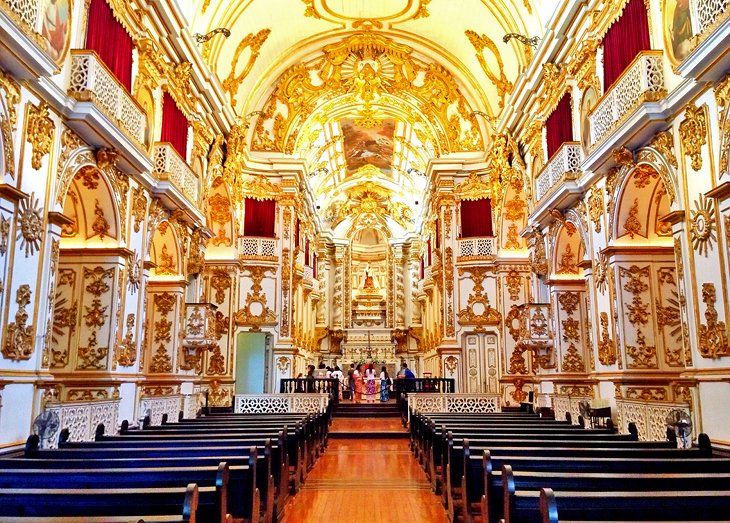
Before the construction of the current cathedral in 1976, the parish church of Nossa Senhora do Carmo served as both the Capela Real (Royal Chapel) and the cathedral. This lasted from 1808 to 1889. A second Carmelite church, Monte do Carmo, was started in 1755 and is connected to the first church by a passageway.
The Baroque facade, the stone doorway, and the white and gold carving by Mestre Valentim in the Chapel of the Novitiate are some of the building's most notable features. The carved wood interior of the previous cathedral, which was built in 1761, features a high altar made of silver. The only street oratory in the city that is still standing is the chapel dedicated to Our Lady of the Cape of Good Hope, which may be found in a side street.
16. Ilha Fiscal
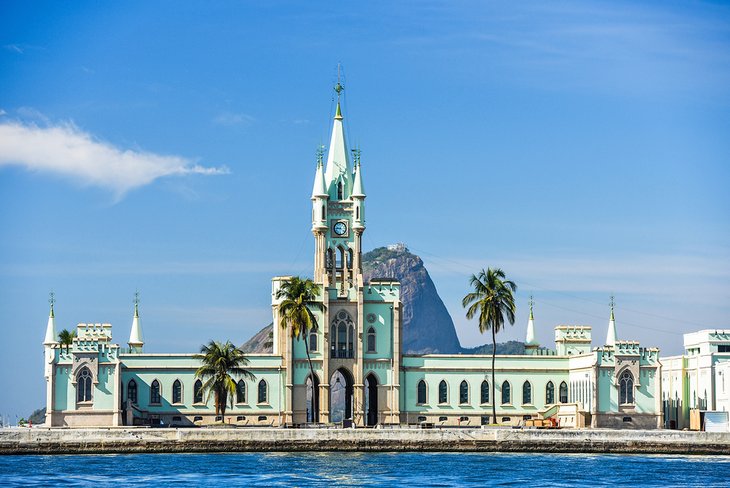
This neo-Gothic castle can be found in the bay of Rio de Janeiro, and it was constructed in 1889. For many years, it served as a customs inspection structure. This architectural masterpiece, which comes complete with turrets and towers, is now accessible to the general public.
Inside Ilha Fiscal, the floors are made of polished mahogany and feature mosaic patterns all around, while the interior's spectacular stained-glass windows shine brightly in the sun of Rio's tropical climate. Visit the museum that is dedicated to the history of the Brazilian navy while you are out and about. The island can be reached by bus or boat, depending on your preference.
17. Catedral de São Sebastião
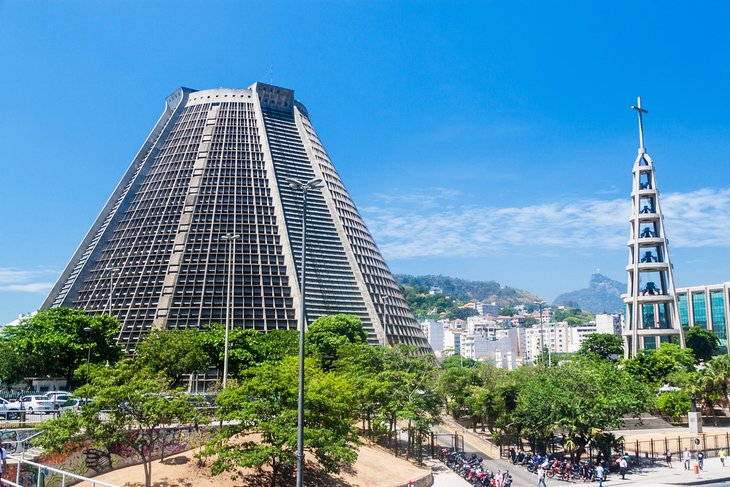
The architect Edgar Fonseca, who was responsible for designing Rio's Catedral de So Sebastio, got his inspiration for the cathedral's soaring features from Mayan pyramids and interpreted them in a contemporary setting. The church was constructed between 1964 and 1979 and has an interior length of 96 meters. It is commonly referred to as the New Cathedral to differentiate it from its immediate predecessor, Nossa Senhora do Carmo, which was built in the same time period. The interior is illuminated with wonderfully colored natural light thanks to the installation of four stained glass windows that rise 64 meters from the floor. At night, the church is lit from within, serving as a luminous beacon on the skyline of the central business district.
18. Take a Boat Trip to Ilha de Paquetá
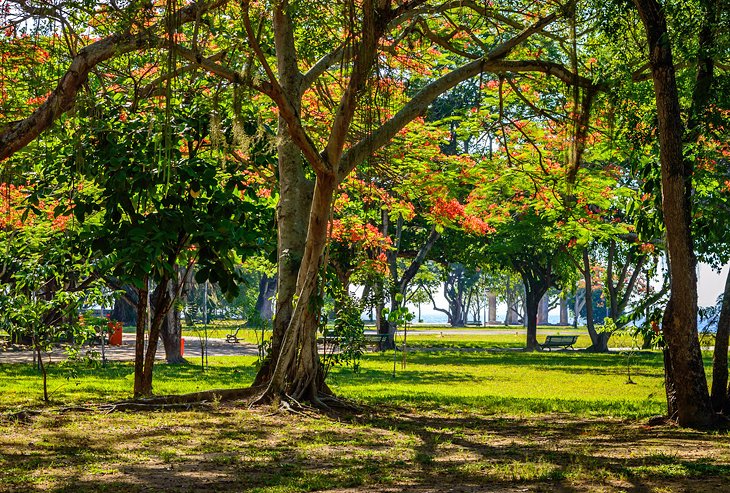
A little more than one square kilometer in size, the island of Paquetá can be found in Guanabara Bay. The island is accessible by boat from Praca 15 de Novembro after a journey of one hour. after the Portuguese Emperor Dom Joo VI began spending his summers here in the early 1800s, the city quickly rose to prominence as a popular vacation destination (the colony of Brazil became the seat of the Portuguese Empire in 1808, after Napoleon's soldiers invaded Portugal).
In addition to the chapel of San Roque from 1698 and the home of José Bonifácio de Andrada e Silva, who is considered to be the father of Brazilian freedom, the Solar del Rey is one of the most notable old buildings in the city. Dom Joo VI regularly stayed in this palace throughout his reign. The island is car-free, so visitors can experience the tranquility of the location on foot, by renting a bicycle or riding in a horse-drawn carriage. Other modes of transportation are also available. On the beaches of the island, which are framed by palm trees, you'll discover makeshift food stalls that grill fresh seafood.
19. Visit to Petropolis for the Day
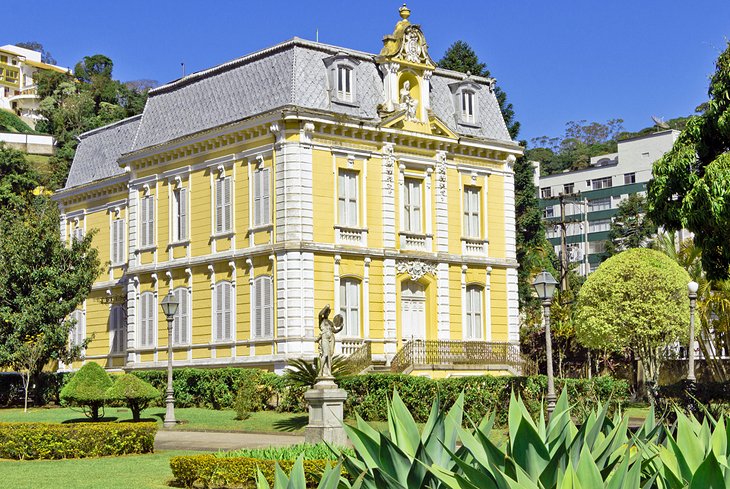
Petrópolis, which is located 68 kilometers away from Rio de Janeiro and is situated high in a forested valley of the Serra dos orgos, was selected by King Pedro II of Brazil to serve as his summer residence. Aristocrats swiftly followed suit, constructing their very own summer palaces and villas, thereby transforming Petropolis into an opulent resort destination catering to the upper classes.
In following years, it gained a reputation as a desirable location for creative types and intellectuals, in addition to being a well-liked vacation spot thanks to the stunning architecture and nice weather all year round. The Imperial Museum is housed in what used to be the Summer Palace and is stuffed full of artifacts and relics from the days of the Brazilian Empire. The Cathedral of Saint Peter of Alcantara, often known as the Crystal Palace, and the home of aviation pioneer Santos-Dumont are three additional sites that are well worth visiting.

